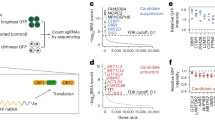Abstract
The expression of the heparan sulfate proteoglycan, syndecan-1, is induced both in keratinocytes and in fibroblasts during development and tissue regeneration. Here we report that in keratinocytes the syndecan-1 gene was stimulated by EGF but not by FGF-2. In fibroblasts it was stimulated by FGF-2 but not by EGF. Likewise, the recently discovered FGF-inducible response element (FiRE) on the gene of syndecan-1 was stimulated by FGF-2 in fibroblasts and by EGF in keratinocytes, but not vice versa. The FiRE has two binding sites for an activator protein-1 (AP-1), one for an FGF-inducible nuclear factor (FIN-1) and one for an upstream stimulatory factor-1 (USF-1). The growth factor-stimulated binding of these transcription factors, as well as their requirement for FiRE activation, varied between the two cell types. First, although AP-1s were required for activation of FiRE in both cell types, the binding of AP-1 to FiRE was increased by growth factor-stimulation only in fibroblasts and not in keratinocytes. Secondly, FiRE did not bind FIN-1 nor needed the FIN-1 binding site for EGF-stimulated activation in keratinocytes, in contrast to the FGF-stimulated activation of FiRE in fibroblasts. Thirdly, EGF, which did not activate FiRE in fibroblasts, failed to activate FIN-1 in these cells. Finally, an USF-1 binding site that was necessary for activation of FiRE in keratinocytes was not needed in fibroblasts. These data suggest mechanisms by which members of the EGF- and FGF-families can differentially stimulate transcription through AP-1 regulated elements in a cell type-specific manner.
This is a preview of subscription content, access via your institution
Access options
Subscribe to this journal
Receive 50 print issues and online access
$259.00 per year
only $5.18 per issue
Buy this article
- Purchase on Springer Link
- Instant access to full article PDF
Prices may be subject to local taxes which are calculated during checkout
Similar content being viewed by others
Author information
Authors and Affiliations
Rights and permissions
About this article
Cite this article
Jaakkola, P., Määttä, A. & Jalkanen, M. The activation and composition of FiRE (an FGF-inducible response element) differ in a cell type- and growth factor-specific manner. Oncogene 17, 1279–1286 (1998). https://doi.org/10.1038/sj.onc.1202002
Received:
Revised:
Accepted:
Published:
Issue Date:
DOI: https://doi.org/10.1038/sj.onc.1202002
Keywords
This article is cited by
-
Syndecans in cartilage breakdown and synovial inflammation
Nature Reviews Rheumatology (2013)
-
Ectopic Expression of Syndecan-1 in Basal Epidermis Affects Keratinocyte Proliferation and Wound Re-Epithelialization
Journal of Investigative Dermatology (2008)
-
Syndecan-1 and syndecan-4 are overexpressed in an estrogen receptor-negative, highly proliferative breast carcinoma subtype
Breast Cancer Research and Treatment (2006)
-
Effect of treatment of larynx and hypopharynx carcinomas on serum syndecan-1 concentrations
Journal of Cancer Research and Clinical Oncology (2006)
-
Function and regulation of AP-1 subunits in skin physiology and pathology
Oncogene (2001)



